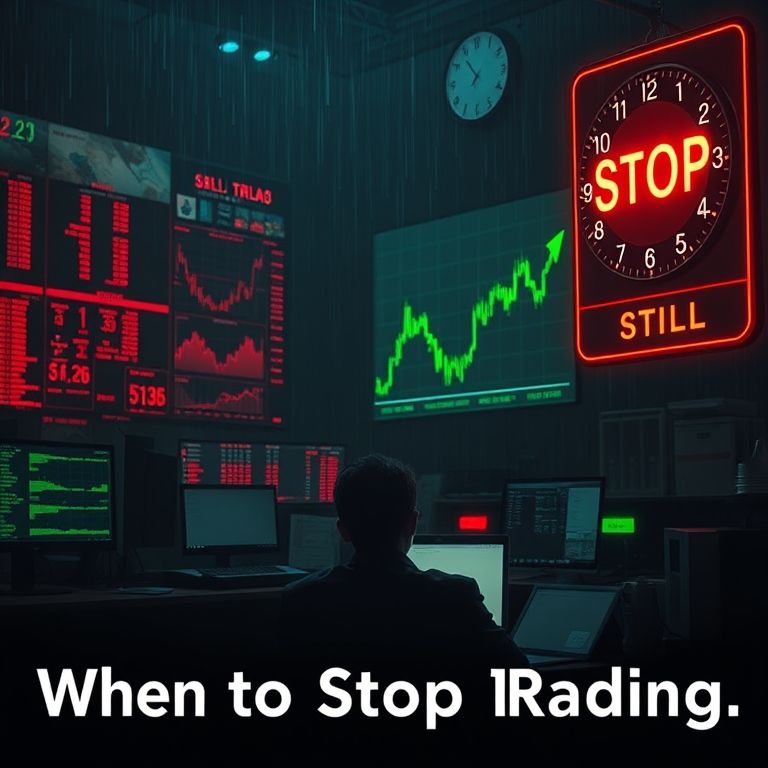when to stop trading
When to Stop Trading: A Practical Guide for Web3 Finance
Intro
I learned the hard way that the market doesn’t care about your ego. You can chase a rally all night, tech screens glow, and your brain screams “one more trade,” but the real wins show up when you know your own limit. This piece is about a sane stopping point—how to recognize it, how to set it, and why it keeps you in the game longer than any single win. We’ll ride through forex, stocks, crypto, indices, options, and commodities, then peek at DeFi, smart contracts, and AI-powered tools that shape today’s decisions.

Core ideas: stop rules aren’t about quitting; they’re about protecting your capital and your clarity. Your best trade might be the one you don’t take.
Asset classes and what stops look like
- Forex and indices: markets move on macro data and liquidity flows. Having a pre-set daily loss limit and a hard exit if you’re against a key support or resistance line keeps you from spiraling on a bad run.
- Stocks and commodities: slower baselines, bigger weekend gaps, and the risk of overhangs. A trailing stop or time-based exit can save your core thesis without letting emotions override fundamentals.
- Crypto and options: 24/7 action, high volatility, and leveraging opportunities that can vanish in hours. Use modest leverage, diversify across assets, and employ volatility-aware stops to avoid being squeezed by sudden moves.
- Cross-asset play: correlations shift. A “one-trade-fits-all” mindset breaks down quickly. Diversify, but honor a unified risk cap so a single misstep doesn’t crash your portfolio.
When to stop: practical signals
- Emotional check-ins: you’re edgy, angry, or exhausted. If your decision quality dips, step away.
- Rule triggers: a daily loss cap, a hit against your risk budget, or a move beyond a defined technical level with no clear plan.
- Data cents, not hunches: if your system flags a failure (your risk score climbs, your backtest doesn’t align with live results, or your chart patterns deteriorate), it’s time to pause and reassess.
Leveraging wisely: strategies that fit real life
- Position sizing: fixed fractional sizing, where risk per trade is a small percentage of capital, keeps you afloat after loud streaks.
- Leverage discipline: keep leverage conservative for volatile assets; higher for well-understood, liquid markets only when you have a solid hedging plan.
- Stops and risk controls: combine stop losses with take-profit targets and optional trailing stops to lock in profits as momentum shifts.
- Reliability habits: use verified data feeds, robust charting tools, and a risk dashboard. Have a non-trading buddy or journal to review outcomes.
Tech edge and DeFi reality
Advanced tech helps you trade with fewer surprises: charting tools, on-chain analytics, real-time liquidity data, and risk metrics all plug into a sharper stop decision. In DeFi, smart contracts automate rules, but security is real. Bugs, oracle delays, and liquidity fragmentation pose risks; diversify across protocols, audit your contracts, and maintain an offline fallback plan. The promise is faster, cheaper, and more open markets; the challenge is staying safe while the tech evolves.
Future trends: AI and smart contracts
AI-driven signals can augment your judgment, but they don’t replace you. The most robust setups use AI to score risk, not to produce blind trades. Smart contracts will push more strategies into automated execution, with pre-defined stop rules embedded in code. Expect tighter integration between real-time data, risk controls, and automated hedges as the standard.
Takeaways and a slogan to carry forward
- Stop rules protect, not punish. They let you stay in the game longer than a single fortune chase.
- Across assets, balance opportunity with risk. Diversify thoughtfully; don’t let one moving part dictate your fate.
- Embrace tech and DeFi, but stay grounded in security and discipline.
- The future belongs to traders who blend smart contracts, AI insights, and humane risk limits.
When you’re tempted to keep staring at the screen, remember: the best trade is the one you walk away from with your capital intact. Trade smarter, sleep better, and keep this simple banner in mind: Stop when your data says stop. Your future profits will thank you.